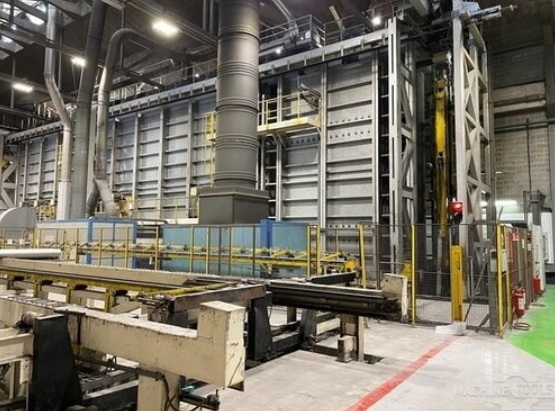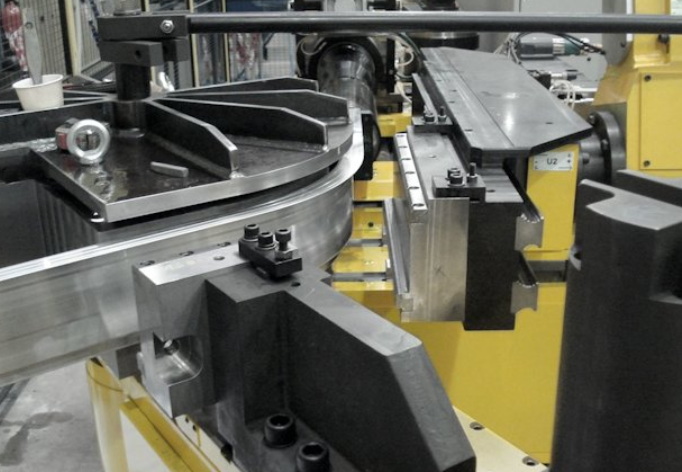Content Menu
● Understanding Film Extrusion and Its Importance
● Key Components of Film Extrusion Equipment That Enhance Efficiency
>> Extruder and Die Technology
>> Cooling Systems
>> Bubble Control Devices
>> Winding and Handling Systems
>> Automation and Control Systems
● How Film Extrusion Equipment Solutions Improve Production Efficiency
>> 1. Continuous and Consistent Production
>> 2. Reduction of Material Waste
>> 3. Increased Line Speeds and Throughput
>> 4. Energy Efficiency and Cost Savings
>> 5. Flexibility for Diverse Applications
>> 6. Enhanced Quality Control and Traceability
>> 7. Reduced Setup and Changeover Times
● Innovations Driving Film Extrusion Equipment Solutions
>> Multilayer Co-Extrusion Technology
>> Digitalization and Intelligent Control
>> Specialized Components for Film Handling
>> Sustainable Production Practices
● Conclusion
● FAQ
>> 1. What are the main components of film extrusion equipment that improve efficiency?
>> 2. How does automation enhance film extrusion production efficiency?
>> 3. What role does multilayer co-extrusion play in film extrusion?
>> 4. How do upgraded motors and drives contribute to efficiency?
>> 5. What are some specialized film handling solutions that improve production?
● Citations:
Film extrusion equipment plays a pivotal role in modern manufacturing, enabling the production of plastic films used in packaging, agriculture, medical, and industrial applications. The continuous evolution of film extrusion technology has significantly enhanced production efficiency, product quality, and sustainability. This article explores how advanced film extrusion equipment solutions contribute to improving production efficiency, highlighting key components, innovations, and operational strategies.

Understanding Film Extrusion and Its Importance
Film extrusion is a manufacturing process where molten polymer is forced through a die to form a thin film, which is then cooled, flattened, and wound into rolls. This process is widely used to produce plastic films for packaging, protective coverings, and specialty applications. The efficiency of film extrusion directly impacts production costs, product consistency, and environmental footprint.
Modern film extrusion equipment solutions provide manufacturers with precise control over process parameters such as temperature, pressure, and material flow, enabling continuous production with minimal waste and high reproducibility[1]. These capabilities are essential for meeting the growing demand for high-quality films with specific properties.
Key Components of Film Extrusion Equipment That Enhance Efficiency
Extruder and Die Technology
The extruder is the heart of the film extrusion line, melting and homogenizing raw materials before shaping them through the die. Advanced extruders feature optimized screw designs and temperature control systems that improve melting efficiency and reduce energy consumption. Dies are engineered for uniform film thickness and minimal material stress, which reduces defects and scrap.
Cooling Systems
Effective cooling is critical to stabilize the film bubble and solidify the film quickly. Modern equipment utilizes internal bubble cooling (IBC) and outer air cooling systems, sometimes supplemented by water-based cooling to enhance heat removal. Improved cooling capacity allows for higher line speeds and better film clarity, directly boosting throughput[4][6].
Bubble Control Devices
Bubble stability is vital for consistent film quality. Equipment such as Z-lift units, bubble guides, and arms maintain the bubble's position and shape during extrusion. These devices prevent bubble wandering and irregularities, reducing downtime and material waste caused by defects[2][7].
Winding and Handling Systems
The winding system collects the finished film onto rolls. Innovations like airless turning bars, fixed non-turning idlers, and spreader bars minimize friction, prevent surface damage, and eliminate wrinkles or edge folds. These improvements ensure smooth handling and reduce film rejection rates[2][4].
Automation and Control Systems
Modern film extrusion lines are equipped with intelligent control systems that monitor and adjust process parameters in real time. Sensors track temperature, pressure, film thickness, and bubble stability, enabling immediate corrections to maintain consistent quality. Automation reduces human error, shortens setup times, and optimizes material usage[1][4][6].
How Film Extrusion Equipment Solutions Improve Production Efficiency
1. Continuous and Consistent Production
Film extrusion equipment enables continuous manufacturing, which is inherently more efficient than batch processes. With precise control over extrusion parameters, manufacturers can maintain consistent film thickness and quality throughout long production runs, minimizing downtime and scrap[1].
2. Reduction of Material Waste
Advanced gravimetric dosing systems ensure accurate raw material ratios, reducing off-spec production and material waste. Automatic gauge control maintains uniform film thickness, preventing overuse of materials and lowering production costs[4].
3. Increased Line Speeds and Throughput
Enhanced cooling systems and stable bubble control allow for faster extrusion speeds without compromising film quality. Higher line speeds translate directly into increased output and better utilization of equipment[4][6].
4. Energy Efficiency and Cost Savings
Upgraded motors and variable frequency drives (VFDs) reduce energy consumption while maintaining performance. For example, a case study showed that switching to liquid-cooled VFDs saved nearly $30,000 annually in electricity expenses for a blown film extrusion operation[5].
5. Flexibility for Diverse Applications
Film extrusion equipment solutions support multilayer co-extrusion technology, allowing manufacturers to produce films with tailored barrier, strength, and sealing properties. This flexibility enables quick adaptation to different product requirements and niche markets, improving overall operational efficiency[3][4].
6. Enhanced Quality Control and Traceability
Real-time monitoring with advanced sensors and automated testing ensures consistent product quality and allows immediate adjustments during production. Digital data management systems facilitate traceability and continuous process optimization, reducing defects and customer complaints[1].
7. Reduced Setup and Changeover Times
Automation options such as mechatronic coextrusion adapters and precise control systems significantly reduce the time required to start up or switch production lines. Faster setup means less downtime and higher overall equipment effectiveness (OEE)[6].

Innovations Driving Film Extrusion Equipment Solutions
Multilayer Co-Extrusion Technology
The ability to produce films with multiple layers (up to five or more) enhances film functionality while optimizing material use. Multilayer films improve barrier properties against oxygen and moisture, mechanical strength, and sealing performance, critical for food packaging and medical applications[3].
Digitalization and Intelligent Control
Integration of digital interfaces, AI, and comprehensive data analysis in extrusion equipment allows for predictive maintenance, process optimization, and rapid troubleshooting. This leads to more stable production, less waste, and improved energy efficiency[1].
Specialized Components for Film Handling
Components such as gusset boards, collapsing tents, and pre-nip chillers improve film shaping and handling, ensuring high-quality finished products with minimal defects. These solutions enhance the efficiency of downstream processes like printing and lamination[2][7].
Sustainable Production Practices
Modern extrusion equipment incorporates energy-saving motors, optimized cooling systems, and the capability to process recycled materials. These features support sustainability goals by reducing carbon footprints and promoting circular economy practices[4].
Conclusion
Film extrusion equipment solutions are fundamental to improving production efficiency in the plastics film industry. Through advanced extruder and die designs, enhanced cooling and bubble control, automation, and digitalization, manufacturers can achieve continuous, high-speed production with consistent quality and reduced waste. Innovations in multilayer co-extrusion and specialized film handling components further expand product capabilities while supporting sustainability. Investing in modern film extrusion equipment not only boosts productivity but also reduces operational costs and environmental impact, securing long-term competitiveness in a demanding market.

FAQ
1. What are the main components of film extrusion equipment that improve efficiency?
The main components include the extruder and die, cooling systems (internal bubble cooling and air or water cooling), bubble control devices (Z-lift units, bubble guides, arms), winding and handling systems (airless turning bars, spreader bars), and advanced automation and control systems[1][2][4].
2. How does automation enhance film extrusion production efficiency?
Automation enables real-time monitoring and adjustment of process parameters, reduces human error, shortens setup and changeover times, and optimizes material use. This leads to consistent product quality, less waste, and higher throughput[1][4][6].
3. What role does multilayer co-extrusion play in film extrusion?
Multilayer co-extrusion allows the production of films with multiple layers, each with specific properties such as improved barrier performance and mechanical strength. This technology enhances product functionality and cost efficiency, supporting diverse applications like food packaging and medical films[3][4].
4. How do upgraded motors and drives contribute to efficiency?
Energy-efficient motors and variable frequency drives reduce electricity consumption while maintaining performance. This lowers operational costs and can lead to significant savings, as demonstrated by case studies using liquid-cooled VFDs in blown film extrusion[5].
5. What are some specialized film handling solutions that improve production?
Specialized components such as gusset boards, collapsing tents, pre-nip chillers, airless turning bars, and spreader bars improve film stability, reduce defects, and streamline downstream processing. These solutions minimize downtime and enhance final product quality[2][7].
Citations:
[1] https://www.kuhne-mb.de/en/landing-pages/film-extrusion
[2] https://www.pearltechinc.com/2025/02/13/extrusion-equipment-blown-film-efficiency/
[3] https://www.plastar-machine.com/en/article/co-extrusion-blown-film.html
[4] https://www.yjing-extrusion.com/how-to-improve-efficiency-in-blown-film-extrusion-equipment.html
[5] https://www.automate.org/motion-control/case-studies/blown-film-extrusion-machine-user-saves-nearly-30k-on-annual-electricity-expenses-with-kebs-vfd
[6] https://reifenhauser.com/en/company/media/news-and-stories/success-story/increase-productivity-plastics-extrusion
[7] https://www.linkedin.com/pulse/enhancing-blown-film-extrusion-comprehensive-guide-ukm5c
[8] https://www.wintechmc.com/news_detail/1911962806467256320.html
[9] https://www.plasco.com.tw/en/article/ABA-Blown-Film-Extrusion-Boost-Efficiency-Reduce-Costs.html
[10] https://abhiplastics.com/the-ultimate-guide-to-boosting-productivity-with-plastic-extrusion-machines/
[11] https://www.collin-solutions.com/en/technology/
[12] http://www.thongguan.com/film-extrusion-and-why-is-it-important/
[13] https://www.wintechmc.com/news_detail/18583496473523159129.html
[14] https://octagon-company.com/solutions/
[15] https://www.chplasticmachinery.com/blog/benefits-of-using-an-extruder-machine-for-your-manufacturing-process/
[16] https://www.linkedin.com/pulse/enhancing-blown-film-extrusion-comprehensive-guide-ukm5c
[17] https://www.ndc.com/film-extrusion-converting/industry-solutions/
[18] https://www.euro-machinery.com/blown-film-vs-cast-film-extrusion-whats-the-difference/
[19] https://www.sciencedirect.com/topics/engineering/film-extrusion
[20] https://kindle-tech.com/faqs/what-are-the-advantages-of-blown-film
[21] https://iotusecase.com/en/solution-examples/production-and-oee-management-in-extrusion-with-real-time-information-and-analysis-app/
[22] https://www.pinch-valves.com/case-studies/valves-for-packaging-machinery-blown-film-extrusion/
[23] https://viemachinery.com/understanding-blown-film-extrusion-process-equipment-and-uses/
[24] https://www.quickdraft.com/capabilities/case-studies-literature/film-extrusion-exhaust-case-study/
[25] https://ppcflex.com/blog/the-blown-film-process/
[26] https://www.wh.group/int/en/our_products/extrusion/
[27] http://castfilmlines.com/case-studies.html
[28] https://www.deltaww.com/en-us/news/38523
[29] https://www.kunghsing.com.tw/en/news_i_ABA_Blown_Film_Machine.html
[30] https://diamat.com/technology/flat-film-production/
[31] https://www.plastar-machine.com/en/article/the-manufacturing-process-of-blown-film-extrusion.html
[32] https://www.matilataiwan.com/en/product-categories/blown-film-machine
[33] https://www.jwellmachine.com/what-are-the-benefits-of-using-a-pvb-film-extrusion-line-to-produce-films/






















